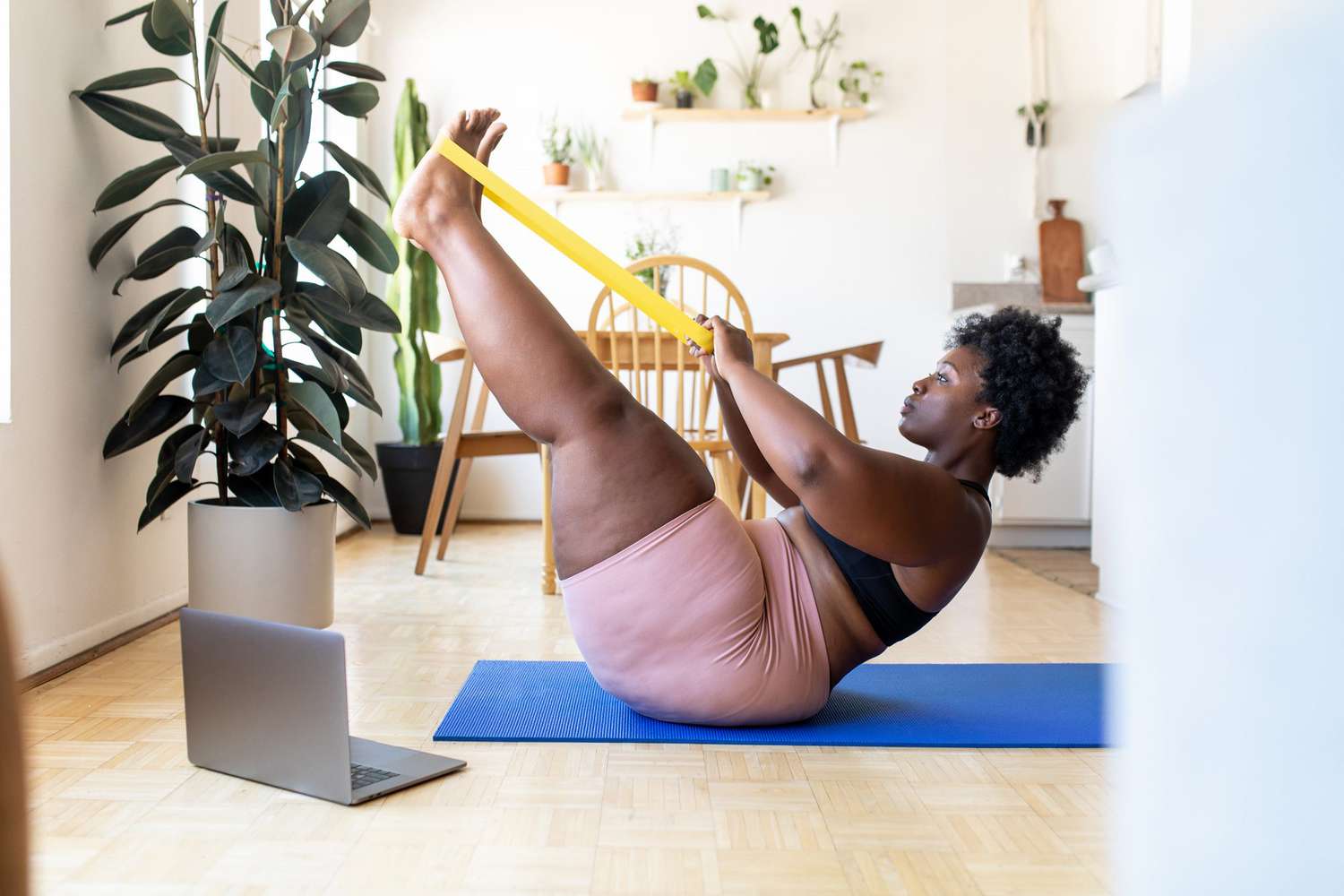Restorative yoga offers numerous benefits, such as relaxation, stress reduction, and improved flexibility. By incorporating gentle poses and using props for support, restorative yoga promotes deep rest and rejuvenation for both the body and mind.
Allow your body to release tension and cultivate inner peace with these restorative yoga poses.

Understanding Restorative Yoga
Discover the numerous benefits of restorative yoga, including stress reduction and improved flexibility. Experience the healing power of restorative poses like the child’s Pose and legs up the wall for better relaxation and overall well-being. Start your restorative yoga journey today!
Definition Of Restorative Yoga
Restorative yoga is a gentle and therapeutic form of yoga that focuses on deep relaxation, rejuvenation, and healing. It involves using props such as blankets, bolsters, and straps to support the body in various poses, allowing for complete surrender and relaxation. Unlike other more active styles of yoga, restorative yoga aims to calm the nervous system, release tension, and promote deep physical and mental relaxation. It is the perfect antidote to our fast-paced modern lifestyles, offering a much-needed opportunity to slow down and restore balance.
Principles Of Restorative Yoga
Restorative yoga is guided by a few fundamental principles that distinguish it from other types of yoga:
- Support: The use of props in restorative yoga provides gentle support, allowing the body to relax fully into each Pose. This support helps to release tension and enable deep relaxation.
- Stillness: Restorative yoga poses are held for longer durations, typically ranging from 5 to 20 minutes. This extended time in each Pose encourages stillness, allowing the mind and body to settle into a state of calm.
- Breath awareness: Throughout a restorative yoga practice, emphasis is placed on conscious breathing. Deep, slow breaths help to activate the relaxation response in the body, further enhancing the benefits of the practice.
- Comfort: Comfort is paramount in restorative yoga. It’s essential to find a position and use props that allow for optimal comfort, ensuring that the body can fully relax and let go.
- Gentleness: Restorative yoga is a gentle practice that avoids strain or effort. The aim is to create a safe and nurturing space for the body and mind to unwind rather than pushing the body to achieve specific physical goals.
By adhering to these principles, restorative yoga provides numerous benefits for both physical and mental well-being. Let’s explore some of the restorative yoga poses that you can try for yourself.

Benefits Of Restorative Yoga
Discover the myriad benefits of restorative yoga, a gentle practice that reduces stress, promotes relaxation, and improves flexibility. Try poses such as legs-up-the-wall, supported bridge, and child’s Pose to experience the rejuvenating effects of this therapeutic practice.
Relaxation And Stress Relief
One of the critical benefits of restorative yoga is its ability to promote relaxation and relieve stress. This gentle form of yoga focuses on long, slow stretches and deep breathing, allowing the body and mind to enter a state of deep relaxation. Through the use of props such as blankets, bolsters, and straps, restorative yoga poses provide support and comfort, enabling the body to release tension and stress.
Restorative yoga poses engage the parasympathetic nervous system, which is responsible for the body’s rest-and-digest response. By activating this system, restorative yoga helps to lower cortisol levels (the stress hormone) and reduce anxiety, creating a sense of calm and tranquility. Regular practice of restorative yoga can, therefore, be a valuable tool in managing the everyday stressors of life and promoting overall emotional well-being.
Improved Flexibility And Mobility
Another excellent benefit of restorative yoga is its ability to enhance flexibility and mobility. While restorative poses are gentle and passive, they still work to stretch and lengthen the muscles and connective tissues. As the body relaxes into these poses, the muscles let go of tension and tightness, allowing for greater freedom of movement.
By consistently practicing restorative yoga, you can help improve your range of motion and flexibility. This can be particularly beneficial for individuals who are recovering from injury, dealing with chronic pain, or simply looking to improve their overall physical well-being. Restorative yoga poses provide a safe and gentle way to stretch and strengthen the body without putting undue strain or stress on the muscles and joints.
Enhanced Mind-body Connection
Restorative yoga also offers the unique opportunity to cultivate a deeper mind-body connection. The slow and mindful nature of restorative poses encourages practitioners to tune in to their bodies and become more present in the moment. By focusing on the breath and sensations within the body, individuals can cultivate a sense of mindfulness and heightened body awareness.
Through this deepened mind-body connection, practitioners are able to tap into their inherent wisdom and intuition. Restorative yoga helps to quiet the mind and bring attention to the present moment, allowing for a greater sense of clarity and self-compassion. The enhanced mind-body connection fostered by restorative yoga can have a profound impact not only on physical well-being but also on overall mental and emotional health.
Restorative Yoga Poses To Try
Restorative yoga is a gentle and relaxing practice that focuses on deep relaxation, stress relief, and rejuvenation. Using props like bolsters, blankets, and blocks, restorative yoga allows you to surrender to each Pose fully, encouraging deep rest and healing.
Child’s Pose (balasana)
Child’s Pose is a restful pose that gently stretches the hips, thighs, and lower back while calming the mind. To practice a child’s Pose:
- Kneel on the floor and bring your big toes together, keeping your knees hip-width apart.
- Place a bolster or a stack of blankets in front of you and fold forward, resting your torso on the prop.
- Extend your arms forward or relax them by your sides.
- Rest your forehead on the prop and breathe deeply, allowing your body to release tension.
Supported Bridge Pose (setu Bandha Sarvangasana)
The supported bridge pose is a gentle inverted pose that helps to open the chest and release tension in the shoulders and back. To practice the supported bridge pose,
- Lie flat on your back with your knees bent and your feet hip-width apart.
- Place a block or bolster underneath your sacrum, the triangular bone at the base of your spine.
- Allow your arms to relax by your sides with your palms facing up.
- Breathe deeply and relax into the support of the prop, feeling a gentle opening in the chest and shoulders.
Legs-up-the-wall Pose (viparita Karani)
Legs-Up-the-Wall Pose is a restorative inversion that helps to reduce swelling, improve circulation, and promote relaxation. To practice the legs-up-the-wall Pose:
- Find a clear wall space and sit with one hip touching the wall.
- Slowly lie down on your back and swing your legs up the wall.
- Rest your arms by your sides, or place one hand on your belly and the other on your heart.
- Close your eyes and take slow, deep breaths, allowing your body to relax and rejuvenate.

Frequently Asked Questions For The Benefits Of Restorative Yoga And Poses To Try
Does Restorative Yoga Tone Your Body?
Restorative yoga does not focus on toning the body. It aims to relax and restore, using gentle poses with the aid of props. However, it can indirectly improve body tone by reducing stress and promoting overall well-being.
What Are the Results of Restorative Yoga?
Restorative yoga produces various benefits, including stress reduction, improved flexibility, pain relief, enhanced relaxation, and better sleep. It also promotes healing, deep breathing, and mindfulness, providing a rejuvenating and calming experience for the mind and body.
How Often Should You Do Restorative Yoga?
Restorative yoga can be done as often as desired, but a regular practice of 1-2 times per week is recommended. It helps to relax and restore the body, promoting deep relaxation and stress relief. Listen to your body and adjust the frequency based on your personal needs and schedule.
Is Restorative Yoga Worth It?
Yes, restorative yoga is worth it. It promotes relaxation, reduces stress, and improves flexibility and overall well-being. It offers gentle poses and is suitable for all fitness levels. Incorporating restorative yoga into your routine can bring numerous physical and mental benefits.
Conclusion
Restorative yoga offers numerous benefits for both the mind and body, allowing for deep relaxation and rejuvenation. By incorporating gentle poses, deep breathing, and guided meditation, this practice helps to reduce stress, improve flexibility, and promote overall well-being. Some restorative poses to try include Child’s Pose, Legs-Up-the-Wall, and Corpse Pose.
Incorporating these poses into your regular yoga routine can significantly enhance your physical and mental health. So why not give restorative yoga a try and experience its transformative effects for yourself? Embrace the healing power of this practice and enjoy a more balanced and peaceful life.


